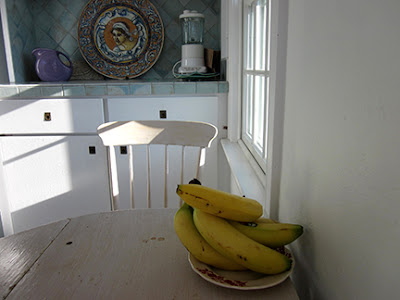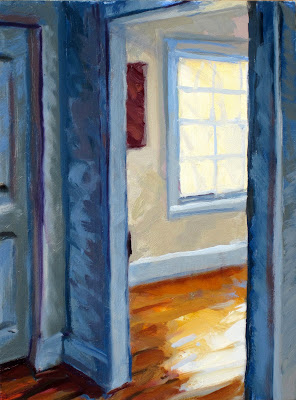Looking Through Hopper's Window

Here are a few more photos I took in Edward Hopper's S. Truro, MA studio this October when we were staying there during our 14th residency. At the top is one of Hopper's kitchen table and chairs where he and his wife Jo would sit to eat. (We supplied the bananas). Below is a view from overhead of the same table that's flanked by two windows facing due east. In the mornings this bright unobstructed light comes in through the two windows. It's delightful. Here is an 8 x 10" pastel drawing I did of the table from a similar viewpoint. Hopper did a number of powerful paintings of people seated around a table as in this early oil of his, Chop Suey from 1929, five years before he built the Truro studio. I love all the personality he expresses in the torsos of the two women. The one is front sculpted with flat angular planes, the one on the far side of the table with more rounded forms. Hopper is enjoying playing off extremely pale colors in





